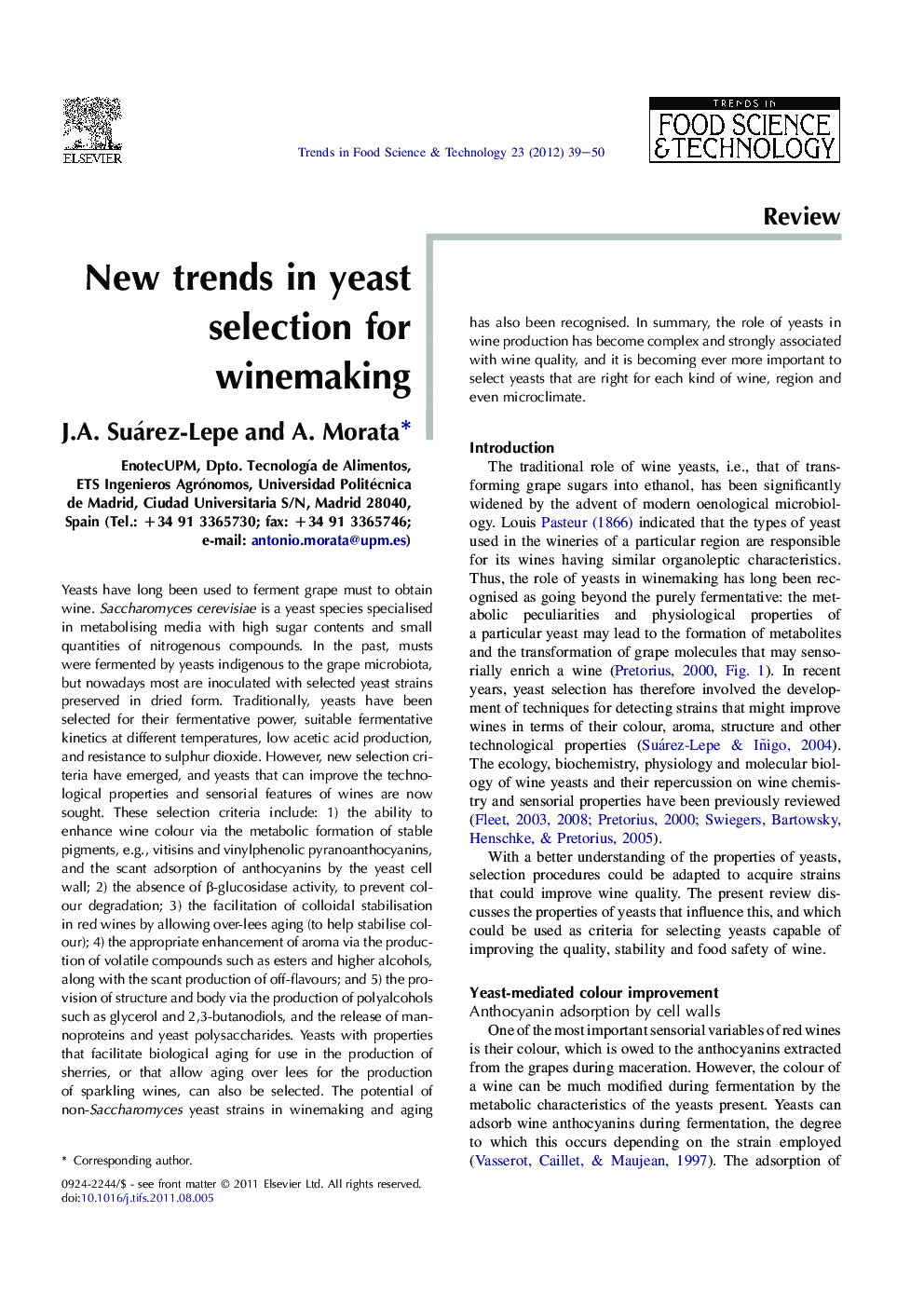| Article ID | Journal | Published Year | Pages | File Type |
|---|---|---|---|---|
| 2099903 | Trends in Food Science & Technology | 2012 | 12 Pages |
Yeasts have long been used to ferment grape must to obtain wine. Saccharomyces cerevisiae is a yeast species specialised in metabolising media with high sugar contents and small quantities of nitrogenous compounds. In the past, musts were fermented by yeasts indigenous to the grape microbiota, but nowadays most are inoculated with selected yeast strains preserved in dried form. Traditionally, yeasts have been selected for their fermentative power, suitable fermentative kinetics at different temperatures, low acetic acid production, and resistance to sulphur dioxide. However, new selection criteria have emerged, and yeasts that can improve the technological properties and sensorial features of wines are now sought. These selection criteria include: 1) the ability to enhance wine colour via the metabolic formation of stable pigments, e.g., vitisins and vinylphenolic pyranoanthocyanins, and the scant adsorption of anthocyanins by the yeast cell wall; 2) the absence of β-glucosidase activity, to prevent colour degradation; 3) the facilitation of colloidal stabilisation in red wines by allowing over-lees aging (to help stabilise colour); 4) the appropriate enhancement of aroma via the production of volatile compounds such as esters and higher alcohols, along with the scant production of off-flavours; and 5) the provision of structure and body via the production of polyalcohols such as glycerol and 2,3-butanodiols, and the release of mannoproteins and yeast polysaccharides. Yeasts with properties that facilitate biological aging for use in the production of sherries, or that allow aging over lees for the production of sparkling wines, can also be selected. The potential of non-Saccharomyces yeast strains in winemaking and aging has also been recognised. In summary, the role of yeasts in wine production has become complex and strongly associated with wine quality, and it is becoming ever more important to select yeasts that are right for each kind of wine, region and even microclimate.
